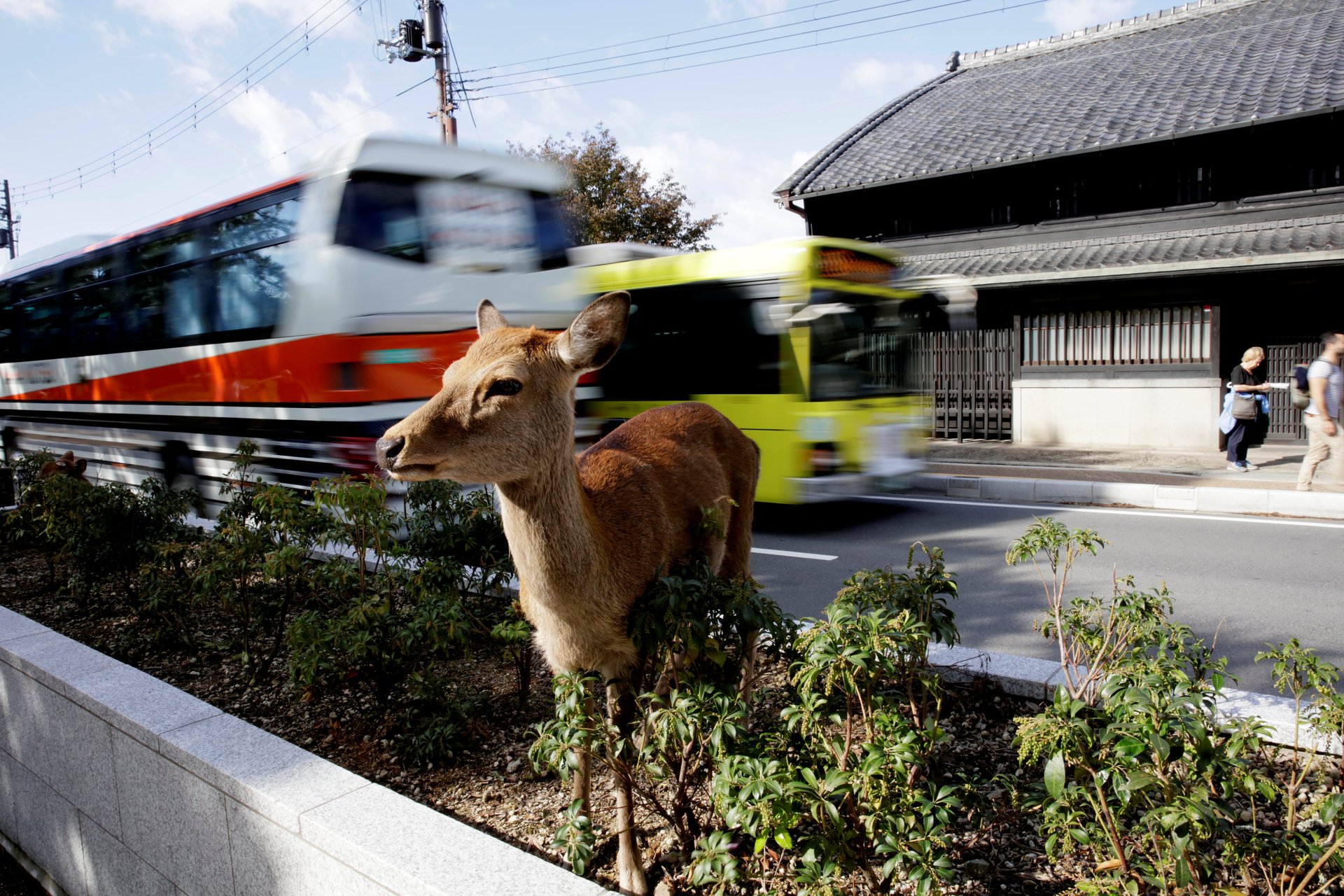Plastic bags are killing the deer in Japan’s ancient capital of Nara
The famous and sacred deer of Nara, Japan’s former imperial capital, attract tourists from the world over. But the two-legged human visitors, eager to mingle with the free-roaming furred grazers, are also bringing with them a toxic and destructive substance: plastic.


The famous and sacred deer of Nara, Japan’s former imperial capital, attract tourists from the world over. But the two-legged human visitors, eager to mingle with the free-roaming furred grazers, are also bringing with them a toxic and destructive substance: plastic.
Deer have long had a special place in Nara, Japan’s first permanent capital for a little over 80 years in the 8th century before it lost the honor to Kyoto, 30 miles (45 km) away. As legend has it, a Shinto deity arrived in the old capital more than a millennium ago on a white deer to act as its protector, and deer have been considered as sacred ever since. The city is an easy day trip from Kyoto, a teeming tourist hub, with Nara’s shrines and deer top of the agenda.
People are only supposed to feed the nationally-protected creatures with deer-friendly senbei crackers, made mainly from rice bran with no added sugars. But it appears that plastic has begun to find its way into the animals’ digestive tracts—with deadly consequence.
Since March this year, six deer that have died were found to have plastic in their stomachs. One had a clump of plastic bags in its gut that weighed 4.3 kg (9.5 lbs). Another died with a hardened mass of plastic weighing 3.2 kg (7 lbs). This accumulation of plastic kills the deer because it prevents the animal from regurgitating, digesting, and ingesting new food, such as the grasses they’re supposed to live on. Unable to eat, the animal slowly weakens and withers away until it finally dies.
Over-eager tourists are getting themselves injured, too. Deer-related injuries have quadrupled since 2013, rising from around 50 to a record high of 200 in 2018, according to city government statistics. Reflecting the rapid growth in foreign tourist numbers to Japan in recent years, 80% of those injured (paywall) by deer last year were non-Japanese. Most were minor injuries like bitten fingers, but some resulted in bone fractures or worse. “The cause seems to be the growth in tourist numbers,” one Nara Park Office official told Nippon.com.
Park officials have stepped up their efforts in appealing for the public’s help in saving the deer. According to the Japan Times, signs in English, Chinese, and Japanese with tips on how to feed the deer have been put up since last April. There are around 1,360 deer in Nara Park, according to 2018 figures from the Nara Deer Welfare Association.
And plastic is not the only fatal threat facing Nara’s beloved deer. According to numbers from the welfare association, there were 29 traffic-related deer deaths last year. Luckily, that is a big drop from 57 in 2017, possibly due to newly-installed wooden fences (link in Japanese).